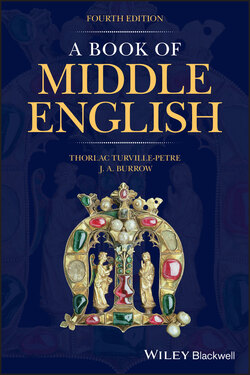Читать книгу A Book of Middle English - J. A. Burrow - Страница 38
4.3.5 Third Person Pronouns: Plural
ОглавлениеThe forms of the plural pronoun also show major regional differences in their development. The oblique (non‐subject) forms derived from Old English survived particularly well, so that Chaucer and Gower at the end of the fourteenth century use hem, ‘them’, and here, ‘their’, but they for the nominative. The modern plural forms are Scandinavian in origin (cf. ON þeir, þeira, þeim), and they are all recorded from the beginning of the thirteenth century in the East Midlands where Scandinavian influence was strong. (See map on p. 16.)
In later texts the genitive adds ‐s when it stands alone: for hores is þe hevenryche, ‘for theirs is the kingdom of heaven’, 8/28.
The forms of the feminine and plural pronouns as they appear in the Gawain manuscript are set out for comparison with those of The Owl and the Nightingale above:
| fem. sing. | plural (all genders) | |
| nom. | ho or scho | þay |
| acc. & dat. | hir or her | hem, hom or him |
| gen. | hir or her | hor, her or þayr |
